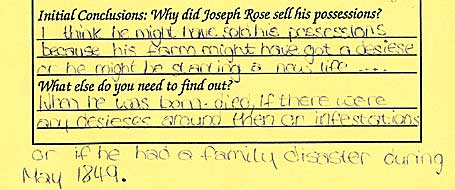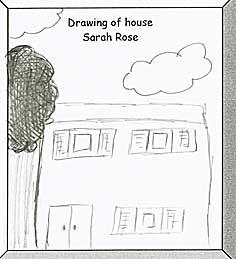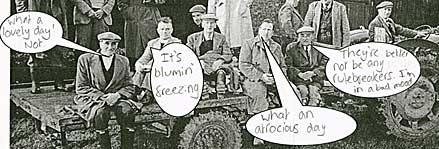Studying Laxton
In the nineteenth century antiquarian interest in Laxton focused on the village’s illustrious medieval past, the castle and the church. However, by the early twentieth century the open field system was recognised as unique. The vicar Rev. Christopher B. Collinson (1864-1930) accumulated a series of notes based on original records, now held at Nottinghamshire Archives. His article, ‘A Survival’, published in Country Life in 1906, introduced Laxton’s heritage to a wide audience.
The detailed work of J.D. Chambers and C.S. and C.S. Orwin began in the 1920s and 1930s. Their books were revised and re-published into the 1960s. Jonathan D. Chambers (1898-1970), Professor of Economic and Social History at The University of Nottingham, had a lifelong interest in Laxton. He first published an article on Laxton’s open fields in the Transactions of the Thoroton Society in 1928, and published a guide to Laxton (Laxton: The Last English Open Field Village (London: HMSO) in 1964.
J.D. Chambers and Philip Lyth dressed as 19th-century farm workers, c.1960
From Chambers Collection Ch Pb 1
This photograph may have been taken in April 1960 at a weekend school organised by the Nottinghamshire Local History Council to study Laxton. The weekend took place at Brackenhurst agricultural college near Southwell, where Philip Lyth was the Principal.
In 1979 the new Conservative government announced its intention of selling Laxton. There was great concern amongst heritage groups about the future of the open fields, generating much discussion in newspaper columns. The East Midland Geographer journal devoted a complete special edition to Laxton and its open fields in 1980.
In 1989 John Beckett published A History of Laxton: England’s last open-field village. He was also the author of a video on Laxton produced by The University of Nottingham in 1988. He made extensive use of documents from the Manvers Collection, which also feature in the Laxton learning resources produced by the University’s Manuscripts and Special Collections department in 2008.
The Laxton website, created by Manuscripts and Special Collections, contains images and transcripts of original archive material, commentaries, a glossary, and other supporting resources. It was adapted from a printed Archive Teaching Unit pack first produced for schools in the 1960s.
There is also a sister website which contains free activity plans and downloadable resources for teachers of Key Stage 3 and GCSE. The activity plans were devised by a history teacher from Kirk Hallam School and staff from The University of Nottingham’s School of Education.



Schoolwork based on the Laxton: Living in an open field village activity plans
Year 8 students produced these worksheets during classroom sessions in which they analysed documentary material relating to Laxton. They looked in detail at a sale notice of Joseph Rose’s possessions and an 1862 survey describing his farm (both of which are in the Laxton website) and also at an entry in the 1862 survey relating to Sarah Rose’s cottage and small garden. A photograph, displayed in Case 2 of this exhibition, can now reveal what her cottage actually looked like. The students also explored the workings of the Laxton Court Leet.
More: Farming the Land
Laxton: Farming in an Open Field Village home